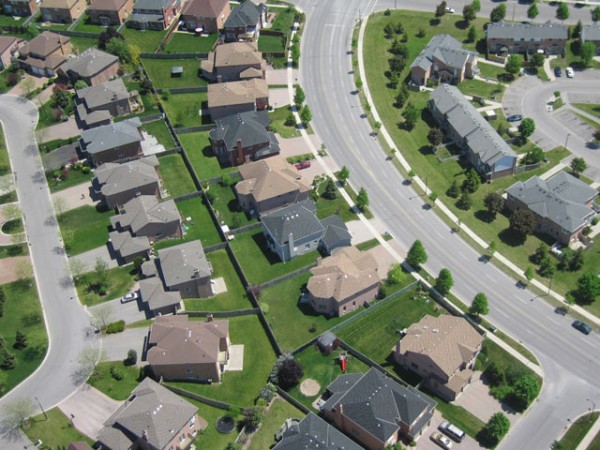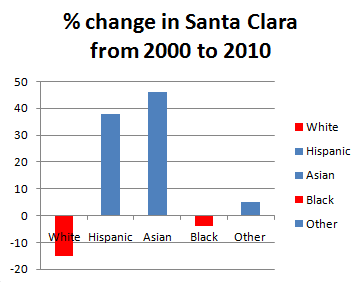
“Its formal name is San Gabriel Square, a crowd of restaurants, bubble tea shops and high-fashion footwear boutiques in a prosperous middle-aged suburb with a majority-Asian population. You can walk around for an afternoon, as I did, and hear nothing but Cantonese and Mandarin. But what stands out about the Great Mall, in this part of the West, is that it no longer stands out at all.”
Professor Wei Li, in a paper looking at the Chinese population in suburban Los Angeles, coined a term for an area like San Gabriel – ethnoburb. An ethnoburb is defined as a suburban residential and business area in North America with a notable cluster of a particular ethnic minority population. They differ from traditional Chinatowns, being wealthier and suburban.
I live and work in Asian ethnoburbs. In the San Jose neighborhood where I live, the population is majority Asian with an Asian oriented shopping center like the one described above (but much smaller). I work in the city of Santa Clara, which is an interesting example of the demographic changes happening in ethnoburbs. Census data comparing Santa Clara’s 2000 population to 2010 showed a drop of 7,400 in the white population, a decrease of 15%. At the same time, the Asian population increased by 13,700. New Asian areas have emerged, like a new Koreatown. We had a wonderful 8asians dinner at a Korean mall there, and my sons really like to eat there also.
While 8asians has had a recent discussion about assimilation, some recent statistics show that the rate of intermarriage of Asian Americans has decreased. Some people cite ethnoburbs as a cause. Intermarriage is also less likely when whites are leaving like in Santa Clara or being reluctant to move in (or both) like in Cupertino. My experiences, particularly with youth sports, tell me Silicon valley, despite much hype about diversity, is a fairly segregated place. I have coached teams for my children’s mostly Asian school for many years and have witnessed the initial shock that the kids experience the first time that they play another team that is totally of another ethnicity.
Asian ethnoburbs include some of the wealthiest neighborhoods in the country. Despite that, it doesn’t stop some people from thinking an ethnoburb is full of scum. One parent from my sons’ school told me about a recent incident at a basketball tournament. Given that our school is made up of mostly Asian short kids, his son’s teams plays a pressing defense, countering height disadvantages with aggressiveness and quickness. The mostly white team they were playing were used to winning easily and not to a bunch of Asian kids. When they ended the first quarter being down by a substantial margin, their parents started getting ugly. They jeered an injured player from our school who was bleeding and suggested how our school was “from the wrong side of the tracks.” To be fair, after eight years of coaching and following my kids’ teams, I have never had a problem with parents from that school. The incident does show that hidden resentments and prejudices about ethnoburbs can bubble out.
The New York Times Op Ed piece on ethnoburbs speculates that ethnoburbs will lead to an increase in political power for Asians and Hispanics. Whether or not you think that ethnoburbs are a positive development, demographic trends say that we will be seeing more or them. Wei Li’s book, Ethnoburb: the New Ethnic Community in Urban America, covers the subject in greater detail.









